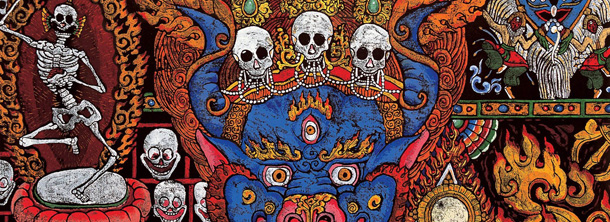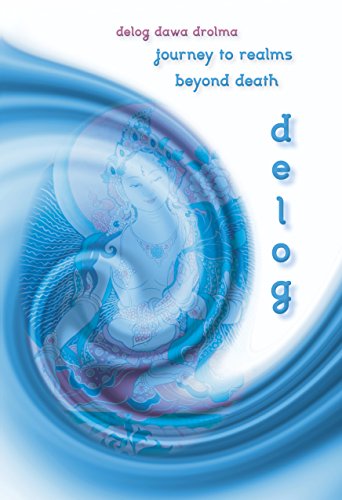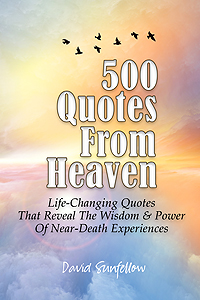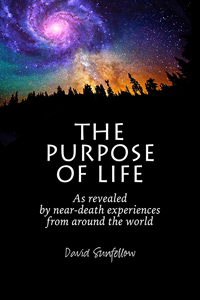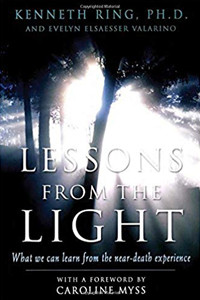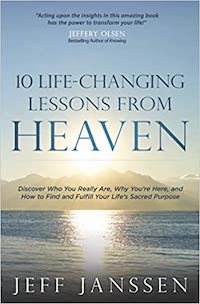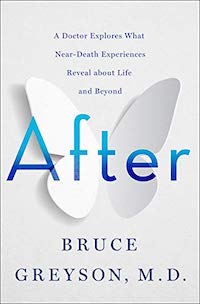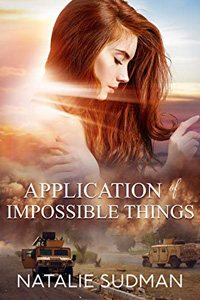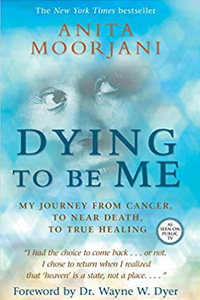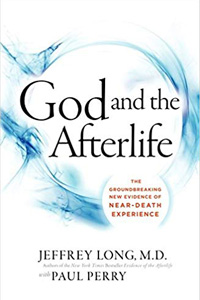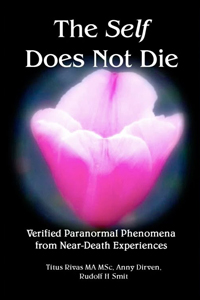![]()
The Tibetan Book of the Dead, also known as “Bardo Thodol” or “The Liberation Through Hearing During the Intermediate State,” is a foundational source for Tibetan Buddhist understandings of the afterlife. The earliest versions of The Tibetan Book of the Dead trace back to an Indian Buddhist master called Padmasambhava. Padmasambhava lived in the 8th century and is widely venerated as a second Buddha across Tibet, Nepal, Bhutan, and the Himalayan states of India. His insights into the afterlife (and the purpose of life) were written down by his primary student, Yeshe Tsogyal. After being lost for centuries, The Tibetan Book of the Dead was re-discovered in the 14th century in the Gampo hills in central Tibet by a Buddhist monk named Karma Lingpa. Over the centuries, the revered book evolved into several different versions. In 1927, one version was published by Dr. Walter Y. Evans-Went by Oxford University Press. In 1967 another version of The Tibetan Book of the Dead was published by Timothy Leary, Ralph Metzner, and Richard Alpert (aka Ram Dass).
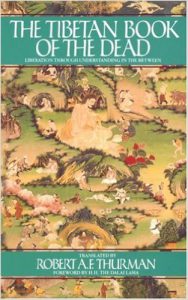 According to Wikipedia, The Tibetan Book of the Dead “describes, and is intended to guide one through, the experiences that the consciousness has after death, in the bardo, the interval between death and the next rebirth. The text also includes chapters on the signs of death and rituals to undertake when death is closing in or has taken place.”
According to Wikipedia, The Tibetan Book of the Dead “describes, and is intended to guide one through, the experiences that the consciousness has after death, in the bardo, the interval between death and the next rebirth. The text also includes chapters on the signs of death and rituals to undertake when death is closing in or has taken place.”
While The Tibetan Book of the Dead is based on the insights of one man, Tibetan Buddhism has a long tradition of people called “delogs” having near-death experiences that support and amplify the experience reported by Padmasambhava. The Tibetan Book of the Dead contains ideas that are echoed in modern-day near-death experiences and by contemporary Tibetan delogs (see below for more information).
To learn more about the purpose of life according to near-death experiences, go here.
To learn more about hellish and distressing near-death experiences, go here.
To learn more about The Tibetan Book of the Dead, go here:
The Tibetan Book of the Dead (pdf version)
Bardo Thodol (Wikikpedia)
Tibetan Book of the Dead (Wikipedia)
Bardo (Wikipedia)
Carl Jung’s Commentary On The Tibetan Book Of The Dead
“For years, ever since it was first published [in 1927], the Bardo Thodol has been my constant companion, and to it I owe not only many stimulating ideas and discoveries, but also many fundamental insights.”
— Carl Jung
To learn more about current past life research, go here.
To learn more about other direct, modern-day windows into the afterlife, go here:
To learn more about the differences between near-death experiences and spiritual traditions that believe “enlightenment” or “awakening from the dream of life” is the goal of life, go here:
What Near-Death Experiences Teach Us by David Sunfellow
Near-Death Experiences on the Purpose of Life
Rethinking Buddhism: A New Way To View Suffering by David Sunfellow
The Three Faces of God by David Sunfellow
Loving Personhood Or Liberation From Personhood? by Robert Perry
Jesus, Near-Death Experiences, and Religion by David Sunfellow
The Purpose of Life, Jesus & NDEs by David Sunfellow
……………
……………
Related Links & Books:
• Charlie Morley & Lucid Dreaming
• Near-Death Experiences on Hell
• Rethinking Buddhism: A New Way To View Suffering
• Historical & Cross-Cultural Near-Death Experiences
……………
A Guided Tour of Hell: A Graphic Memoir
By Samuel Bercholz
Amazon Description:
Take a trip through the realms of hell with a man whose temporary visitor’s pass gave him a horrifying — and enlightening — preview of its torments. This true account of Sam Bercholz’s near-death experience has more in common with Dante’s Inferno than it does with any of the popular feel-good stories of what happens when we die. In the aftermath of heart surgery, Sam, a longtime Buddhist practitioner and teacher, is surprised to find himself in the lowest realms of karmic rebirth, where he is sent to gain insight into human suffering. Under the guidance of a luminous being, Sam’s encounters with a series of hell-beings trapped in repetitious rounds of misery and delusion reveal to him how an individual’s own habits of fiery hatred and icy disdain, of grasping desire and nihilistic ennui, are the source of horrific agonies that pound consciousness for seemingly endless cycles of time. Comforted by the compassion of a winged goddess and sustained by the kindness of his Buddhist teachers, Sam eventually emerges from his ordeal with renewed faith that even the worst hell contains the seed of wakefulness. His story is offered, along with the modernist illustrations of a master of Tibetan sacred arts, in order to share what can be learned about awakening from our own self-created hells and helping others to find relief and liberation from theirs.
……………
Peaceful Death, Joyful Rebirth: A Tibetan Buddhist Guidebook
By Tulku Thondup
Amazon Description:
Buddhism teaches that death can be a springboard to enlightenment — yet for all but the most advanced meditators, it will be the gateway to countless future lives of suffering in samsara. Tulku Thondup wrote this guide to help us heal our fear and confusion about death and strengthen our practice in anticipation of this transition, and to help us realize the enlightened goal of ultimate peace and joy — not only for death and rebirth, but for this very lifetime. In simple language, he distills a vast range of sources, including scriptures, classic commentaries, oral teachings, and firsthand accounts. The book includes:
• An overview of the dying process, the after-death bardo states, and teachings on why, where, and how we take rebirth
• Accounts by Tibetan “near-death experiencers” (delogs), who returned from death with amazing reports of their visions
• Ways to train our minds during life, so that at death, all the phenomena before us will arise as a world of peace, joy, and enlightenment
• Simple meditations, prayers, and rituals to benefit the dead and dying
• Advice for caregivers, helpers, and survivors of the dying
This edition includes an audio program providing guided instructions by the author on how to visualize Amitabha Buddha in the Pure Realm; how to receive his blessings; how to visualize transforming your body into light and sound at the time of death; how to share the blessings with compassion for all sentient beings; and how to rest in oneness. By becoming intimate with this practice while we’re alive, we can alleviate our fear of death, improve our appreciation of this life, and prepare for death in a very practical way, while planting the seeds for rebirth in the Pure Land.
…………..
Foundations of Near-Death Research: A Conceptual and Phenomenological Map
By Alexander Batthyany
Excerpt from Chapter 2.2
A “Little Death”: The Near-Death Experience and Tibetan Delogs
By Lee W. Bailey, Ph.D.
Excerpt:
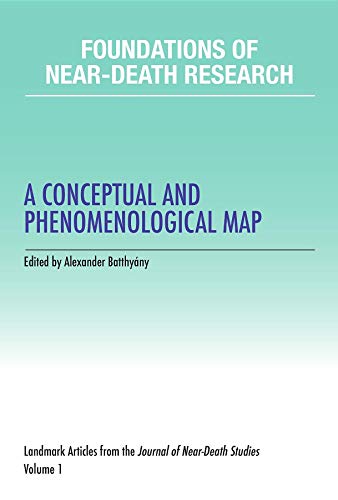 Accounts of people called delogs, dying and coming back to life, are well-known in Tibetan culture, and have been sporadically mentioned in Western studies. Now Euro-American researchers are translating texts and interviewing living delogs. Reviving after appearing to be dead for hours or days, these remarkable people report fantastic journeys into an otherworld filled with dramatic Buddhist figures judging and punishing or rewarding the dead.
Accounts of people called delogs, dying and coming back to life, are well-known in Tibetan culture, and have been sporadically mentioned in Western studies. Now Euro-American researchers are translating texts and interviewing living delogs. Reviving after appearing to be dead for hours or days, these remarkable people report fantastic journeys into an otherworld filled with dramatic Buddhist figures judging and punishing or rewarding the dead.
The Tibetan word is transliterated ’Das log, and variously spelled in different languages, but pronounced “DAY-log.” I have adopted the spelling of the latest English book entitled Delog, About Dawa Drolma, translated by her son (Drolma, 1995). Some regional dialects use other colloquial names.
In typical accounts of delogs, as young persons they have been gravely ill. High in the Himalayan mountains, lying in a small hut, they seem to be dead to those grieving around them. But instead, they later report, they had risen up above their bodies, which then they did not recognize as their own. Theirs is an archaic example of a mystical experience of the after-death state. Delog deaths are an extraordinary tradition in Tibetan culture, strikingly akin to the near-death experience (NDE).
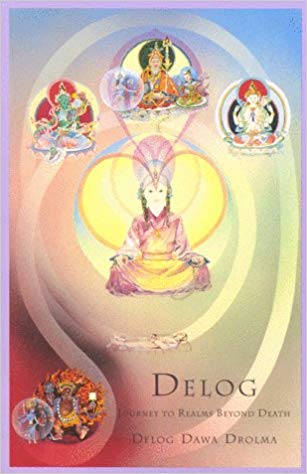 Next these persons’ dazed souls enter into a raucous hereafter, guided by their personal deity. They are taken to meet the horrifying Lord of Death himself. They are led on a shocking tour of Hell, where they see numerous condemned souls miserably suffering punishments befitting their sins, such as the nun who hears the unending cries of her own baby whom she murdered. The anguished sinners send urgent messages back to the living, begging family to do rituals to aid in their salvation and exhorting others to live an ethical life. The astonished travelers meet deceased parents and travel to paradise. Returning to the throne of the Lord of Death, they observe the dreadful judgment of souls with a bridge, a scale, or a mirror. They themselves are judged and given a message to send back. Their consciousnesses return to their bodies on earth. They deliver the various messages and exhort all to practice their Tibetan Buddhist religion faithfully.
Next these persons’ dazed souls enter into a raucous hereafter, guided by their personal deity. They are taken to meet the horrifying Lord of Death himself. They are led on a shocking tour of Hell, where they see numerous condemned souls miserably suffering punishments befitting their sins, such as the nun who hears the unending cries of her own baby whom she murdered. The anguished sinners send urgent messages back to the living, begging family to do rituals to aid in their salvation and exhorting others to live an ethical life. The astonished travelers meet deceased parents and travel to paradise. Returning to the throne of the Lord of Death, they observe the dreadful judgment of souls with a bridge, a scale, or a mirror. They themselves are judged and given a message to send back. Their consciousnesses return to their bodies on earth. They deliver the various messages and exhort all to practice their Tibetan Buddhist religion faithfully.
Such accounts of the Tibetan delogs are astoundingly akin to what we in the West call near-death experiences. But there are revealing differences with important implications. Sogyal Rinpoche discussed the delog phenomenon in The Tibetan Book of Living and Dying (Sogyal, 1993). He reported that “In Tibet this was an accepted occurrence, and elaborate methods were devised for detecting whether déloks were fraudulent or not” (Sogyal, 1993, p. 331). Earlier studies include articles by Lawrence Epstein (1982), Kenneth Ring (1993), and Christopher Carr (1993). I will discuss their views below.
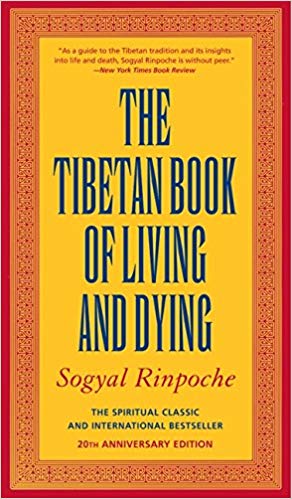 There are historical records of delogs and contemporary studies of living delogs. Usually women, delogs have a revered place in Tibetan popular religion, although they may be neglected by some Buddhists. Historically, Buddhism was introduced to Tibetan culture from India in the 7th century C.E. The Indian master Padmasambhava was then invited by the King of Tibet in the 8th century. In order to bring Buddhism to Tibet, Padmasambhava had to contend with the native Bön religion, and some of the resulting traditions spiritualized these earlier tribal shamanic practices. The first Buddhist monastery was founded in 775 C.E. Later the leadership focused on the Dalai Lama, who was seen as the bodhisattva Avalokiteshvara in human form, living in the Potala palace in Lhasa. Although the delogs remained on the fringe of rural, archaic, Himalayan tradition, they absorbed much of the new Buddhism.
There are historical records of delogs and contemporary studies of living delogs. Usually women, delogs have a revered place in Tibetan popular religion, although they may be neglected by some Buddhists. Historically, Buddhism was introduced to Tibetan culture from India in the 7th century C.E. The Indian master Padmasambhava was then invited by the King of Tibet in the 8th century. In order to bring Buddhism to Tibet, Padmasambhava had to contend with the native Bön religion, and some of the resulting traditions spiritualized these earlier tribal shamanic practices. The first Buddhist monastery was founded in 775 C.E. Later the leadership focused on the Dalai Lama, who was seen as the bodhisattva Avalokiteshvara in human form, living in the Potala palace in Lhasa. Although the delogs remained on the fringe of rural, archaic, Himalayan tradition, they absorbed much of the new Buddhism.
Following Epstein, the most notable anthropologist to study delogs was the French anthropologist Françoise Pommaret (1989), the first Westerner to do a book-length study, Les revenants de l’au-dela dans le monde Tibetain: Sources littéraires et tradition vivante [Those who return from the hereafter in the Tibetan world: Literary sources and living tradition]. She traveled often to the Himalayan highlands just south of Tibet, still accessible despite the 1959 Chinese invasion of Tibet, and part of Tibetan culture. In Nepal and Bhutan she discovered historical records of ten delogs from the 11th to the 20th century. She then interviewed a delog in a village in Nepal and three in Bhutan.
The other new book about a delog is the English account of Delog Dawa Drolma, who lived in Tibet around 1900 to 1941 and recorded her dramatic journeys to the hereafter with the aid of a scribe. Her book Delog: Journey to Realms Beyond Death was translated into English in 1995. Wandering Himalayan storytellers (mani pa) are also known for retelling these incidents (Pommaret, 1989). Delog accounts became a Tibetan literary genre by the 16th century, but they are just now reaching a global audience.

